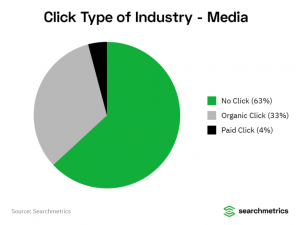By now, you and your company should understand the value of social media engagement, leveraging social media accounts to the fullest, and how it can affect growth for businesses.
Fairly common knowledge, right?
But you’d be surprised how many companies still do not think social media will boost their brand or is important to dedicate time to.
Social media engagement includes the interactions your audience has with social posts. This includes results-driven by paid social advertising, company social media posting, or utilizing a brand ambassador program. No matter which you or your company practices (a combination of those is ideal), there should be a consistent activity for your brand on social media.
Yet, with so many people and brands activating and spending time on social media, content tends to get drowned in the sea of information.
On top of that, you have algorithm changes from social media networks, which can have positive and negative impacts on how content is seen by your networks. Now, more than ever, it takes going beyond just posting content with no context and hoping to get a ton of engagement.
The below social media engagement tactics in this article will be useful to you if:
- You’re a brand advocate and participate in employee advocacy
- You’re active in social selling but are not seeing the social engagement you’d like
- You’re looking to become a thought leader in your industry
- You run the social accounts for your company and are looking for a social media engagement strategy to help boost results (likes, comments, shares, clicks, etc)
- Or some combination of the above
So if you noticed your social media engagement has started getting stale when you post company/industry content or your company’s social engagement is stagnant, the tips in this post can help you start to solve those challenges.
Before We Dive In
Before we jump into some of the social media engagement ideas and tips, we need to first stress the importance of the content you intend to share. Without good content, whether on your company blog or lining up good third-party resources, your interactions with your personal accounts or branded social handles most likely will not get the engagement you desire.
For companies practicing employee advocacy, figuring out their content strategy and ensuring its education to prospects will be key. If you expect to see any growth in social media engagement, your content choices will have a huge impact.
Although you can start to implement some of the below tactics to your social media posts, I’d highly recommend getting your list of trusted third-party content resources in order and that your company is creating educational content that your desired audiences will want to engage with.
1. Best times to post on social platforms
Find the best time to post on social platforms will be up to you and experiment with results. But, just doing a quick Google search of the best times to post will yield tons of articles analyzing results, but basically, all stating the same things.
Do I think there are certain times that are best to post? Yes and no.
It all depends on where the majority of your audience is based and I will say that popular time ranges do somewhat matter. However, to help social media engagement, I like to share at really random time intervals.
Many people will post at 30-minute intervals or even at the top of every hour. The challenge with the 30-minute intervals is it’s common for people and companies to schedule posts at those times. A flood of posts can easily bury anything interesting you might be sharing, potentially having less visibility.
I like to try random time intervals that do not follow any specific pattern, for example like 9:13, 3:49, etc. It helps break free from the common intervals of social posting when everyone else is.
Does this have a significant impact on social media engagement? Probably not, but is something worth trying and testing yourself.
Try to stay ahead of all the noise and content on social platforms, you can try 5-minute intervals or really random times like me and see what works best for you.
2. Include more text in the status sections
One trend you might have seen on LinkedIn is long-form statuses that are each one line and have tons of white space, making the readers click “see more” to read the rest and get to a link.
It actually proved to be a somewhat effective strategy, but then quickly got out of control and everyone was trying to do that and got saturated quickly (it lost some of its initial appeal).
Instead, while long-form content is definitely a good move with some whitespace, write more than a few words per sentence and make it interesting, educational, and engaging. There is too much fluff out there and in-depth content within your status section will help boost engagement.
Search engine ranking for blog content has already proved that long-form content works best and that now applies to social media. Twitter only recently extended its character count and LinkedIn and Facebook already have allowed that, but take advantage of that character space.
Not everything you share needs to be long-form as it can take time to craft the right message, but it should be essential in your arsenal when posting. Your networks are more willing to read, click, and comment on material that is well-thought-out and informative.
3. Adjust how you use hashtags and tagging
The hashtag is a powerful feature for your social media engagement strategy, but should not also be abused or you’ll look spammy. No one likes to see social posts from a bunch of spam-bots.
The beauty of hashtags as it is not just for Twitter and Instagram, but has been gaining more traction with Facebook and LinkedIn. However, it’s surprising more people are not using it on Facebook or LinkedIn consistently when this can help put your content in front of even more people who are looking at the feeds of those hashtags.
Additionally, look ahead at hashtags that actually have some traction in whatever niche you plan on posting about or in your industry. If there are very few posts in the stream for a hashtag, you’ll most likely want to avoid using it since there are not many people looking at that hashtag.
Users who use the most widely used hashtags that are relevant to their content, not only have their content hit a much larger audience, but those content shares with hashtags receive up to 2x more engagements and clicks than those that don’t.
Additionally, using the “@” feature to tag people, companies, writers, thought leaders, etc. in social posts will also be a useful social media engagement tactic. Again, be cautious and selective like hashtags, and don’t get all “tag happy” or you may quickly get blocked.
Yet, you also want to know which is best to use in a given situation. For example, let’s say an article mentions a few large companies, try to hashtag the company instead of “@” as employees of the company are more likely to see it and interact. Companies that don’t have massive Twitter followers would be better to tag them, as they will more likely see that.
Many companies who are practicing employee advocacy or heavily invested in social campaigns, use specific hashtags among their employees and readers. It is easier to tap into that network and gather their attention than trying to tag a company that gets thousands of tweets daily.
4. The power of emojis
Generally, emojis were used to boost email subject lines or content within an email, but they should be used in social posts to boost engagement. Previously, these emojis may have seemed a bit unprofessional, but these days they are unavoidable and help content stand out a bit.
When you are sharing content and writing statuses to go along with it, sometimes it helps to call out your points to include emojis.
For example, AppSumo founder and former Facebook and Mint employee Noah Kagan uses taco emojis in some of his updates. Yet, he’s only one example and you probably have noticed more people using them on Linkedin, Facebook, and Twitter.
But using emojis helps you add your own unique personality or style to your social posts. Have bullet points about what you’re sharing? Use checkmark emojis in place of the bullet points or another variation. Show off your style and make your post “pop” more.
And being able to use emojis goes beyond using a mobile app, as you can copy and paste any emoji from here into your posts if you are on a desktop computer.
5. Consistently commenting, liking, & engaging with others
Plenty of times with posting on social media, we get into a routine of just sharing content. Yet, a key part of boosting engagement is building relationships with people in your networks.
Fill your timeline with re-shares, comments, likes, and join other conversations online to build a more personal and human touch.
That is incredibly important if you are practicing social selling or involved in employee advocacy, but even for brand accounts too. While it might be your company handle, the same should be applied.
You are seen as more engaged and involved, more humanized, and that your agenda is more than just constantly blasting content out. Getting involved builds a trust that your networks will appreciate and be more willing to engage with your future social posts.
Besides interacting with what your followers and who you are following, you can use identified hashtags and engage with new people who have similar interests to you or your industry. This can help not only build new social media engagement but can help grow your network of people who will most likely enjoy and trust your content.
6. Do more with social posts and content
It’s easy to get into a rhythm of just sharing links to articles, whether your company content or third-party. And while you want that type of content, only posting that can get a bit repetitive and less engaging with your networks.
Instead, mix up the content you share on social media. Re-purpose a blog post into a short video that could be shared, use specific parts to create images with no links, create statuses with valuable information without links or images, create gifs, etc.
There are so many tools out there for free and if you have other resources at your company, use them to also help create these materials. Mixing up all the various content in different mediums will help boost engagement and can boost older material that looks more recent.
Your content should never just be posted and shared once, it should be re-purposed and shared in various ways on different social networks.
Final Thoughts
No matter what form of social media you are involved in: being a brand advocate, practicing social selling, building your social thought leadership, or managing your company’s social account — boosting social media engagement will be essential and important.
Yet, with all the content being shared and algorithms being adjusted, posting content a few times a day is not enough to build credibility, grow your network, or even have your social posts be seen.
A few of the above points you may have heard or even practice, but ask yourself if you are pro-actively being consistent.
While these are suggestions that have worked for me personally, there is never really one correct answer. Everyone’s networks, how they write copy, knowledge, and interests vary — so your social media engagement strategy may also be different.
Yet, mix the above tactics in for a period of time, monitor your engagement, see which seem to be working best, and focus more energy on those specifically.
What are you doing to boost your social media engagement?
Digital & Social Articles on Business 2 Community
(5)







